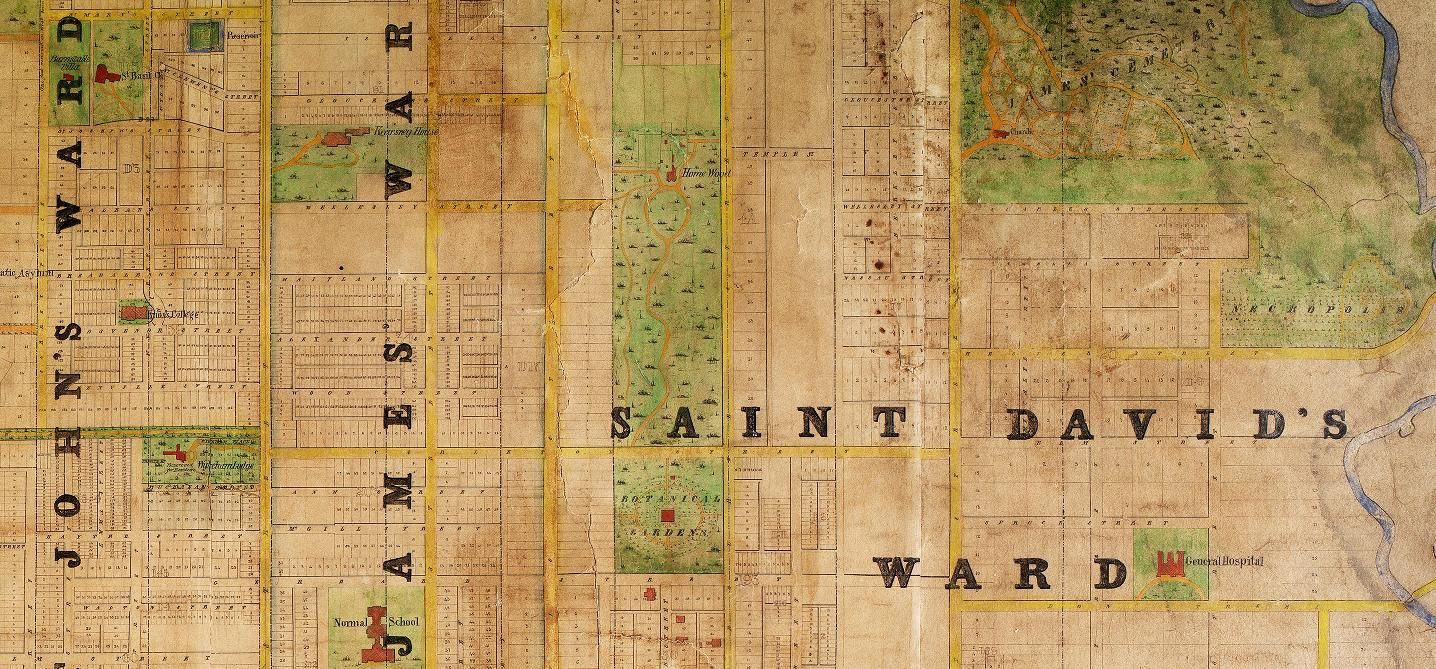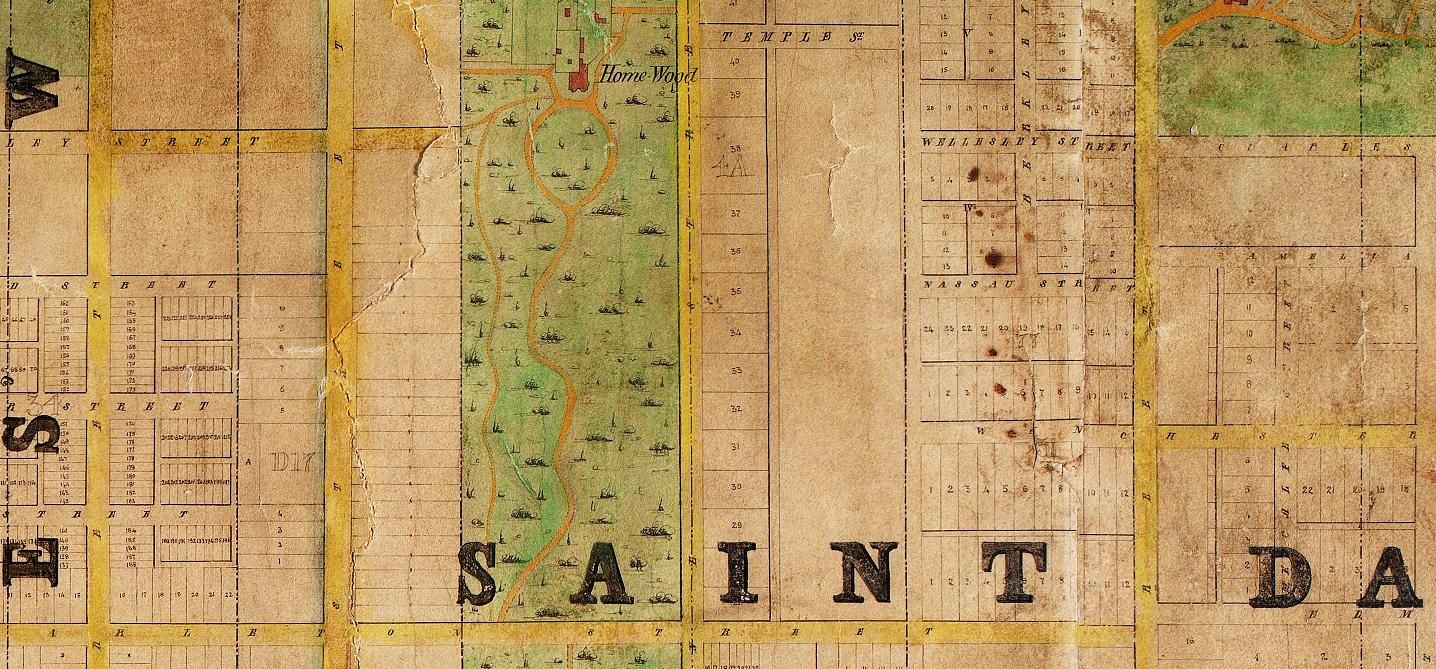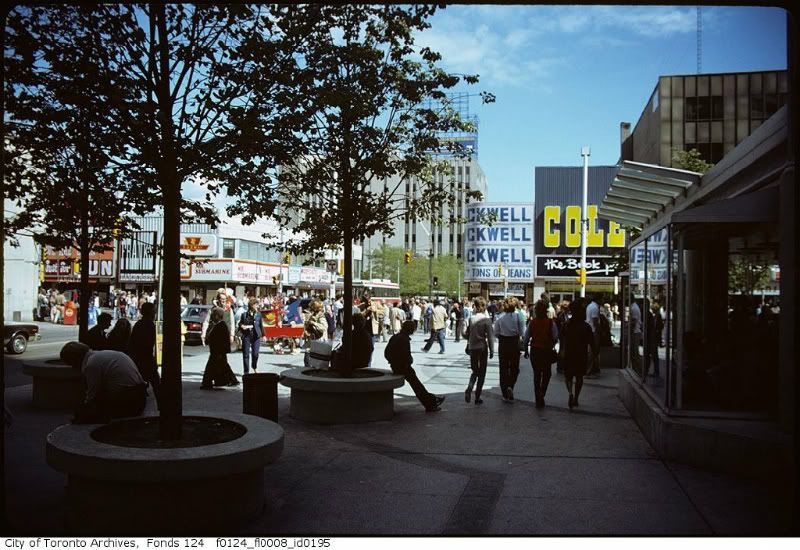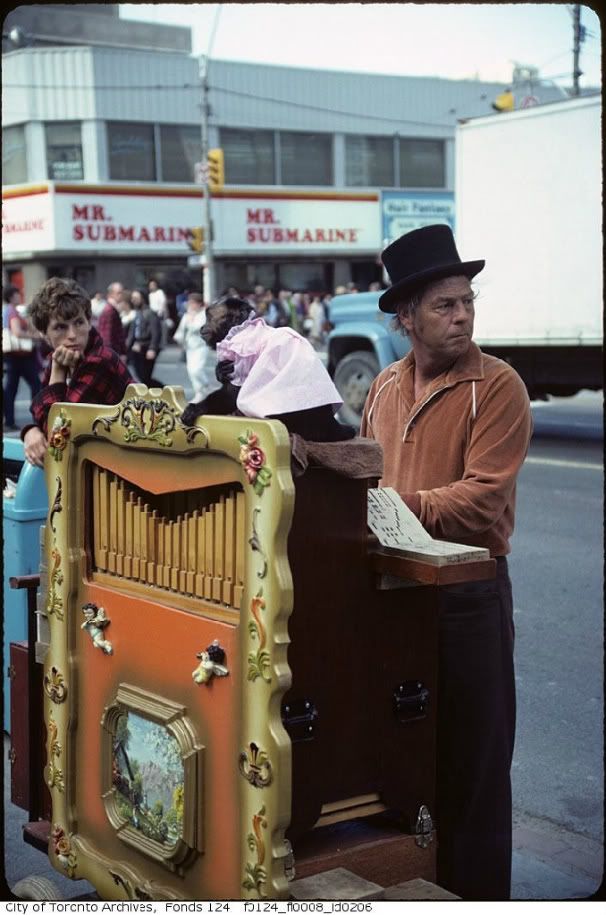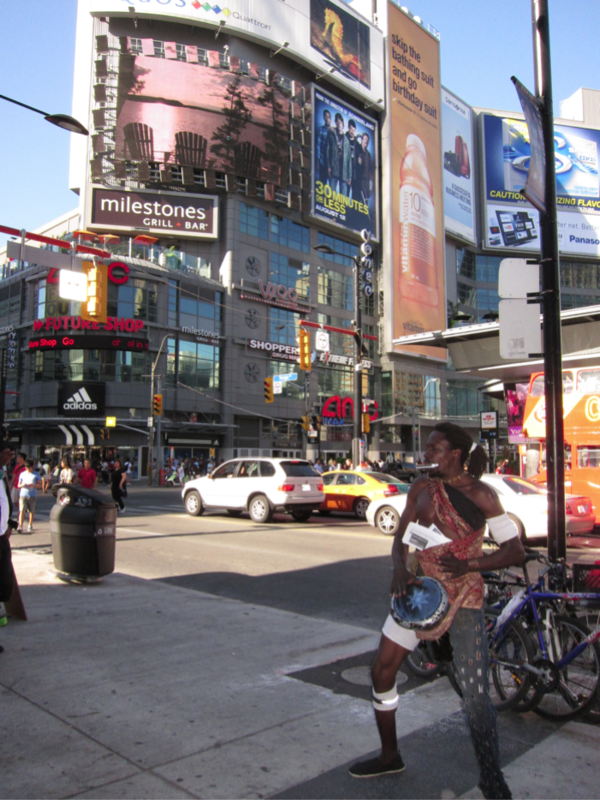There was a cemetery on the western section of The Meadow in the early days before York became Toronto. From
http://torontofamilyhistory.org/projects/
The small cemetery was located on the north side of Duchess Street (now called Richmond Street East) roughly bounded on the east by Stonecutter’s Lane, and on the north by Britain Street. The west boundary was a third of the way to George Street, at about today’s 260 Richmond Street East. It was about a half acre in size. The boundaries of the graveyard were reportedly somewhat undefined as bodies were unearthed when both Caroline (now Sherbourne) and Britain streets were built.
There's quite a bit more history of the cemetery in the article. It's a long way down the page.
